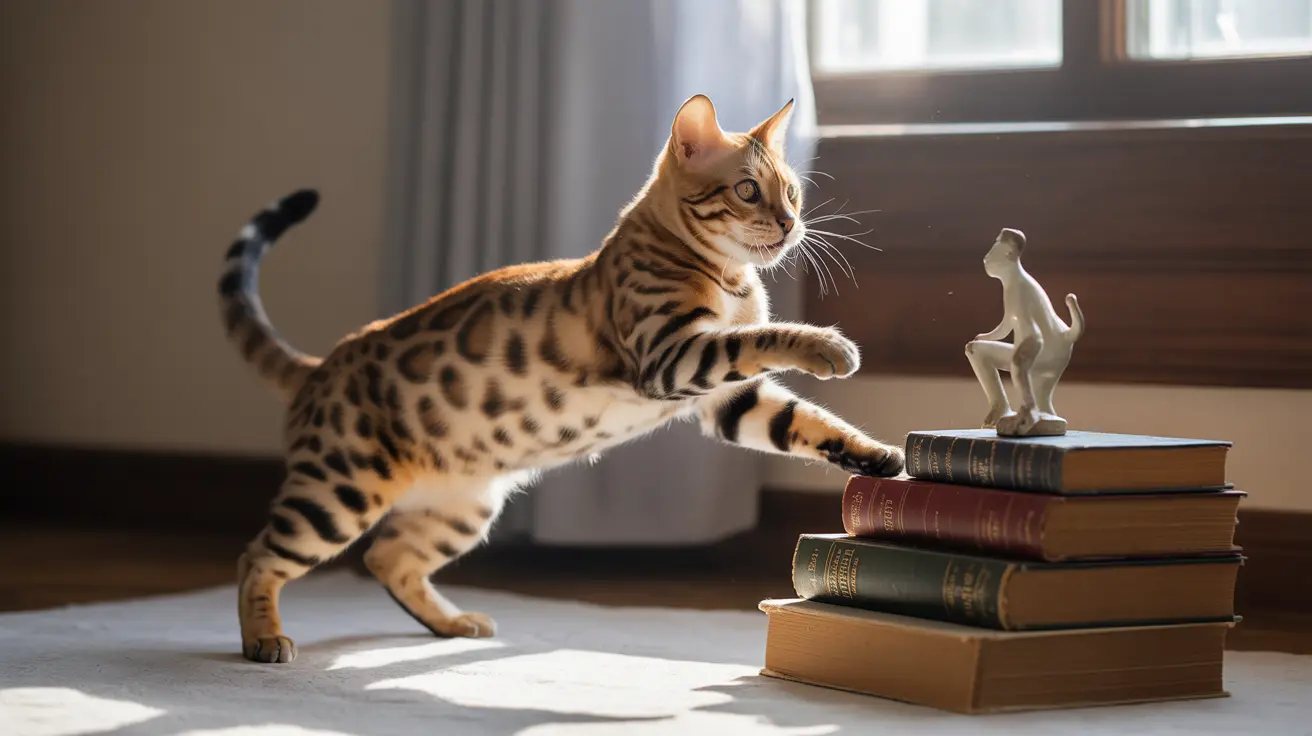Why Do Cats Display "Naughty" Behaviors?
If you've ever wondered "why is my cat so naughty," you're not alone. What we perceive as naughty behavior in cats is often a manifestation of their natural instincts, unmet needs, or attempts to communicate something important. Understanding these behaviors is the first step toward creating a more harmonious relationship with your feline friend.
From scratching furniture to knocking items off shelves, these seemingly mischievous actions usually have logical explanations rooted in feline psychology and biology. Let's explore the real reasons behind your cat's behavior and learn effective solutions to address them.
Natural Instincts vs. Naughty Behavior
Many behaviors we label as naughty are actually normal cat instincts. Cats are natural hunters, climbers, and territorial animals. When these instincts manifest in our homes, they can appear problematic, but they're essential aspects of feline nature.
For example, scratching furniture isn't an act of defiance - it's a natural behavior cats use to mark territory and maintain their claws. Similarly, sudden bursts of energy (often called "zoomies") are remnants of their wild hunting patterns.
Common Triggers for Unwanted Behaviors
Lack of Environmental Enrichment
Many cats act out simply because they're bored. Without proper stimulation, they'll create their own entertainment, often in ways we don't appreciate. Providing climbing spaces, scratching posts, and interactive toys can significantly reduce unwanted behaviors.
Stress and Anxiety
Changes in routine, new pets or family members, or even rearranged furniture can trigger stress-related behaviors. Cats might express their anxiety through excessive grooming, inappropriate elimination, or aggressive behavior.
Solutions for Managing Cat Behavior
Creating an Enriched Environment
Ensure your cat has plenty of appropriate outlets for their natural behaviors:
- Multiple scratching posts with different textures
- High perches and climbing opportunities
- Interactive toys that simulate hunting
- Dedicated play sessions at least twice daily
Establishing Routines
Cats thrive on predictability. Regular feeding times, play sessions, and consistent rules help reduce anxiety-driven behaviors. When cats know what to expect, they're less likely to act out.
Medical Considerations
Sometimes, what appears as naughty behavior could signal underlying health issues. Sudden changes in behavior, increased aggression, or inappropriate elimination might warrant a veterinary check-up to rule out medical causes.
Frequently Asked Questions
Why is my cat so naughty and scratching furniture all the time?
Cats scratch furniture to mark territory, maintain claw health, and stretch. Provide multiple scratching posts in different locations and textures, and use positive reinforcement to encourage their use.
How can I stop my cat from knocking things off shelves and being destructive?
This behavior often stems from boredom or attention-seeking. Increase interactive play time, provide puzzle toys, and create designated spaces where your cat can safely explore and climb.
What causes cats to act aggressive or bite during play, and how can I manage it?
Play aggression is common, especially in young cats, and stems from hunting instincts. Use appropriate toys instead of hands for play, and end sessions when your cat becomes overstimulated.
How do boredom and lack of stimulation lead to naughty behaviors in cats?
Without adequate mental and physical stimulation, cats will find ways to entertain themselves, often through destructive behaviors. Regular play, environmental enrichment, and interactive toys are essential for preventing boredom.
When should I be concerned that my cat's naughty behavior might signal a health problem?
Consult a veterinarian if you notice sudden behavioral changes, increased aggression, inappropriate elimination, or any behavior that seems unusually persistent or intense.
Conclusion
Understanding why cats exhibit certain behaviors is crucial for addressing them effectively. Rather than viewing your cat as naughty, recognize these actions as communication attempts or expressions of natural instincts. With proper environmental enrichment, consistent routines, and patience, most unwanted behaviors can be successfully managed or redirected.






